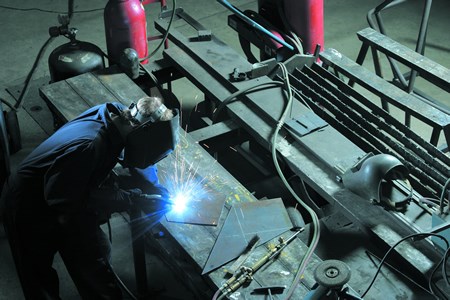The explosion of interest in Timmins' tradespeople has created ripple effects in the city's educational sector, with the two public colleges both seeking to move forward on multi-million-dollar expansions.
With an eye on better serving the francophone population of the northeast, College Boréal has recently broken ground for its new $11.5 million, 48,000-square-foot site in the north end of the city.
"Timmins is booming, and the economy is good, but our current space is just not adequate to reflect these realities," says Danielle Talbot-Lariviere, Boréal's vice-president of corporate services.
"We want to give a full college experience, not a piecemeal offering."
This new construction project will merge the school's various buildings littered throughout Timmins, and will allow local enrolment to quadruple from its current limit of 100 to 450.
Designed by Timmins architects J.L. Richards with Cochrane's CVG Builders acting as the general contractor, the new single-site facility is expected to be completed by July 2009 in anticipation of accepting students two months later.
While the new campus will host various programs, the primary focus will be on trades.
Space for millwrights and heavy duty equipment mechanics will be doubled, even tripled under the new plan to accommodate two of the school's most popular programs.
Given the cyclical nature of many of the trades throughout the North, the new facility will have enough flexibility in terms of its lab space to allow for a changing focus on other fields.
These will also allow for greater focus on those trades which are in greater demand, Talbot-Lariviere says.
"If there's a boom in construction, we can adjust our space and our offerings to adjust to it," she says. "Similarly, if there's a sudden need for masonry, we can adapt to that, or any number of other programs. This truly will be a multi-functional lab."
While construction is underway, another expansion has already been approved for the facility. A newly-minted partnership with l'Université de Hearst add another 15,000-square feet to the construction site, allowing for fluid collaboration with Boréal on degrees to college graduates. The province recently agreed to provide $3.5 million to the project.
Though still in the proposal stage, Northern College also has extensive plans for a new expansion at their local Porcupine campus.
The campus hasn't added any new square footage since 1989, and rising student interest is causing a strain at the seams. Over the last three years, applications to apprenticeship programs have risen 350 per cent, and have increased tenfold over the last seven years. School officials have spent four years developing and tweaking a proposal for a variety of new additions to the local campus, which the province recently agreed to support to the tune of $8 million.
The 35,000-square-foot space known as the Nor Tech Centre for Trades and Technology will allow for additional programs to be added to the program roster, including construction craft worker, heavy duty equipment mechanic and millwright. It will also permit for increased capacity in existing programs, such as electric engineering technology as well as construction and maintenance electrician.
Due to be complete in 2010, the facility will allow for an additional 120 students to be enrolled.
"We've pulled a lot of rabbits out of a lot of hats over the last few years, but we clearly need investments to adjust to our current and future needs," says Michael Hill, president of Northern College.
The school is also eyeing a 24,000-square-foot space for health sciences and emergency services. This would be in partnership with the city, which is expected to cover the costs of amalgamating the various local fire halls onto the Northern College site, benefiting students in the Pre-Service Firefighter program.
Similarly, the relocation of an East End ambulance station to the Northern College campus is also being suggested. The Cochrane District Social Services Administration Board (CDSSAB) would lease the space, allowing paramedic students to earn direct training opportunities, while allowing existing paramedics access to fitness and educational resources on their down time.
The danger to the project, Hill says, is time. As the project has been in development for the last four years, the price of gas and shortage of construction personnel has steadily driven up project costs. What's more, those costs will continue to rise with every passing month, forcing Northern to constantly adjust their proposal to prove more financially attractive to the government.




